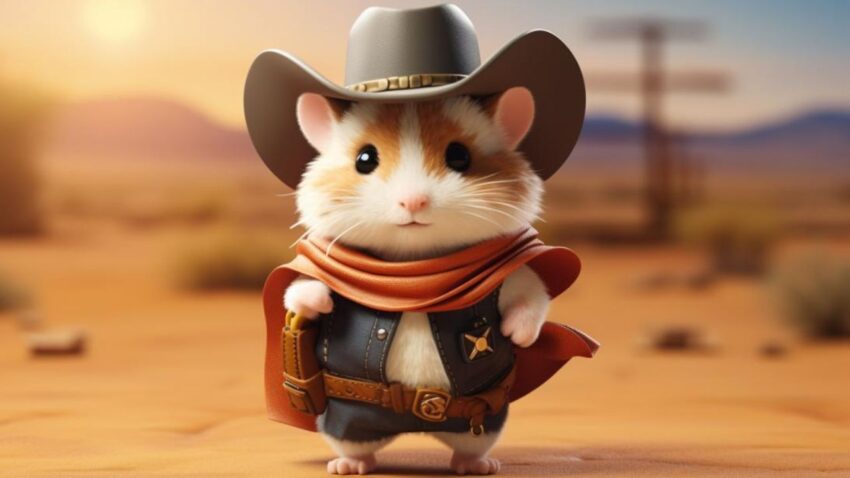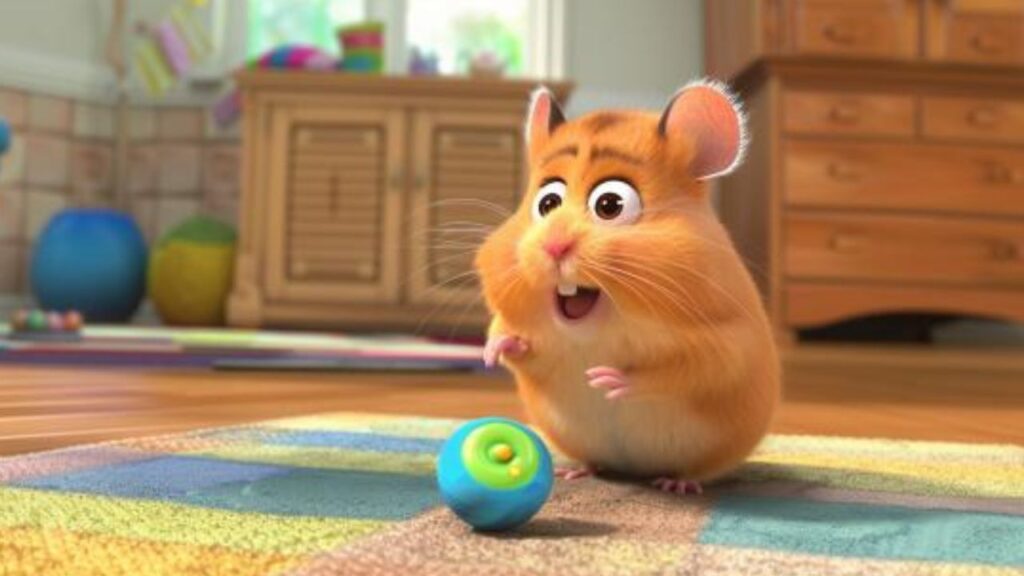Hello there, fellow hamster enthusiasts! It’s your friend, Hannah Hammie, diving into a fascinating journey today. We often see our furry friends running on their wheels or nibbling on treats, but have you ever wondered about their backstory? Yes, our beloved hamsters have quite the historical tail – I mean tale! Let’s scurry through the annals of time to uncover the ancient beginnings, the moments of documented discovery, and the initial steps towards domestication of these adorable creatures.
The Ancient Beginnings
Picture this: vast, ancient landscapes, long before hamsters became our cuddly companions. Hamsters’ history dates back millions of years. They are believed to have originated in the warm, sandy regions of northern Syria and Greece. Fossil records suggest that these critters have been scuttling around since the Miocene epoch. That’s about 5 to 23 million years ago! Back then, hamsters were not the tiny furballs we know today. They were wild, resourceful, and very much a part of the natural ecosystem, adapting to various environmental changes over eons.
Documented Discovery
Fast forward to more recent history, the story of hamsters turns a page. The first documented discovery of the Syrian or Golden hamster, the species most commonly found in our homes, dates back to 1839. Zoologist George Robert Waterhouse first described these little guys, noting their golden fur and pouches – an iconic feature. But, it wasn’t until the 20th century that hamsters really started to gain attention. In 1930, biologist Israel Aharoni made a monumental discovery in Aleppo, Syria. He found a mother hamster and her litter of pups, a finding that played a pivotal role in bringing these cuties into the limelight of scientific research and eventually, into our homes.
Initial Domestication Efforts
The story of hamster domestication is as intriguing as a hamster navigating a new maze. After Aharoni’s discovery, those Syrian hamsters were brought to Jerusalem and later to other parts of the world for scientific study. Initially, their role was primarily in research labs, contributing to various scientific advancements, especially in genetics and medicine. But it didn’t take long for their charming personalities and ease of care to be recognized. By the mid-20th century, these fluffy balls of energy had captured the hearts of pet lovers, leading to their widespread adoption as household pets. The journey from wild to domesticated was gradual and marked by a growing understanding and appreciation of these tiny creatures.
In the next section, we’ll explore the natural habitats and lifestyles of hamsters in the wild. So, keep your hamster wheels spinning, as we delve deeper into the world of these fascinating animals!
Hamsters in the Wild: Understanding Their Origins

Welcome back, hamster fans! It’s Hannah Hammie here, ready to take you on a wild ride into the natural habitats of our furry friends. Before they were running on wheels in our living rooms, hamsters had a whole different life in the wild. Let’s burrow into the details of their native habitats, their wild behaviors, and the incredible survival strategies they’ve developed over time.
Native Habitats and Species
Hamsters are quite the globetrotters! Originating from various parts of Europe and Asia, these critters have adapted to a range of environments. The Syrian hamster, also known as the Golden hamster, hails from arid regions like Syria and Turkey. Imagine them scurrying through dry, sandy landscapes! Meanwhile, the Roborovski hamster prefers the desert regions of Central Asia, and the Russian dwarf hamster is found in the steppes of Kazakhstan and Siberia. Each species has evolved uniquely to thrive in its specific ecosystem, whether that’s dry deserts or cold, harsh steppes.
Behavioral Traits in the Wild
In the wild, hamsters are quite the solitary creatures. They’re mostly nocturnal, emerging at dusk to avoid daytime predators and the harsh sun. These little furballs are serious about their personal space, with territories ranging up to several hundred meters. They communicate through a variety of means, including scent marking and high-pitched vocalizations, especially when they want to keep others at a ‘paw’s distance’.
Their behaviors are fascinating! From storing food in their spacious cheek pouches to burrowing elaborate underground tunnels with separate chambers for sleeping, storing food, and even a bathroom area. These behaviors are not just cute, but crucial for their survival in the wild.
Survival Strategies and Adaptations
Hamsters are survival artists. Their cheek pouches are not just for show; they’re essential for transporting food back to their burrows. And speaking of burrows, these underground homes are marvels of rodent architecture, helping them stay cool in the heat and warm in the cold.
Adaptation is their middle name. For instance, Syrian hamsters hibernate when temperatures drop or food becomes scarce, a clever way to survive tough times. Their fur changes thickness and color based on the season for better camouflage and temperature regulation. Even their reproductive strategies are tuned for survival – they breed rapidly and have multiple litters each year to ensure their lineage continues.
In the wild, life isn’t easy, but hamsters have developed an amazing set of skills to thrive in diverse and challenging environments. Their journey from these natural habitats to our cozy homes is a testament to their adaptability and enduring charm.
The Path to Domestication
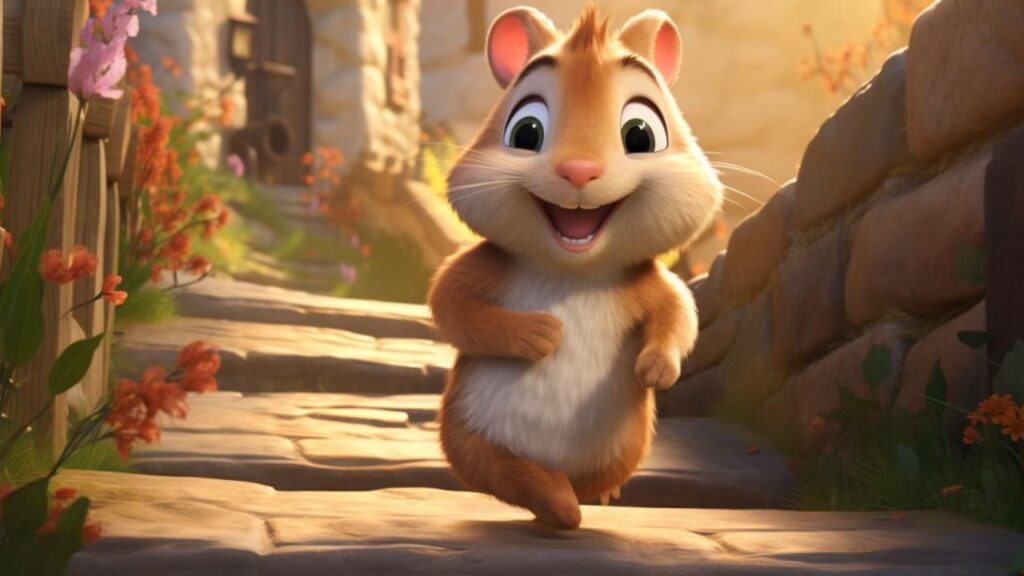
Hey there, hamster enthusiasts! Hannah Hammie here, ready to whisk you along the fascinating path of how our adorable, wheel-loving friends transitioned from wild rodents to cherished household pets. The journey of hamster domestication is a tale filled with scientific curiosity, unexpected twists, and a growing love affair with these tiny creatures.
Early Captive Breeding
Our story of domestication begins with a handful of hamsters in the 1930s. Remember Israel Aharoni, the biologist who discovered a mother hamster and her pups in Syria? Well, those pups were the pioneers in the world of captive hamster breeding. Initially, this breeding was purely for scientific purposes. The hamsters were bred in captivity to create a stable population for research. Their small size, short breeding cycles, and ease of care made them ideal subjects for scientific studies. Little did anyone know, this was just the beginning of their journey into human hearts and homes.
The Role of Science and Research
Science played a starring role in the domestication of hamsters. In laboratories, hamsters contributed significantly to medical and genetic research. They were crucial in the development of various vaccines and in understanding human diseases. Through research, we learned a lot about hamster behavior, genetics, and physiology, which laid the foundation for proper hamster care and breeding in captivity.
This period was crucial in demonstrating that hamsters could be more than just research subjects; they could be companions. Researchers and lab workers began to notice their playful personalities, their endearing behaviors, and how they responded to human interaction. It wasn’t long before the leap was made from the lab to the living room.
Popularity Surge in the 20th Century
The real turning point for hamsters as pets came in the mid-20th century. As people learned more about these fascinating creatures, their popularity soared. By the 1950s and 60s, hamsters had become a pet craze in many parts of the world. They were the perfect pet for various reasons – small and manageable, low maintenance, and, of course, incredibly cute!
The variety of breeds available today, from the Syrian hamster to the dwarf varieties, can be traced back to these early captive breeding efforts. Breeders began to select for traits that were desirable for household pets, such as gentleness and a wider range of colors and coat types.
This domestication journey reflects our ever-changing relationship with animals, from viewing them solely as research subjects to loving and cherishing them as family members. Today, hamsters are one of the most beloved small pets worldwide, a testament to their adaptability and the deep bond humans can form with animals.
Hamsters as Modern-Day Pets
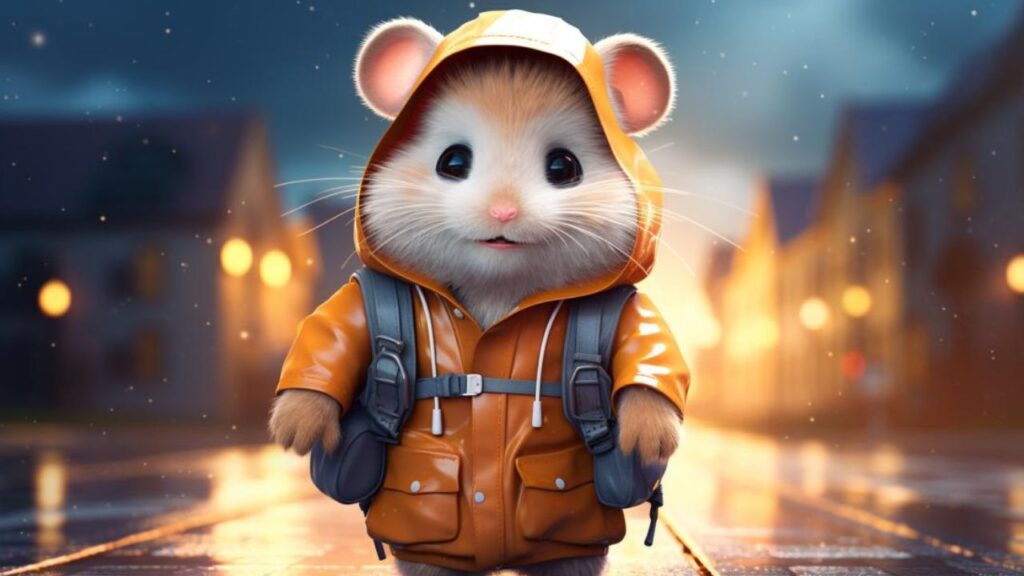
Hello again, hamster pals! Hannah Hammie here, ready to dive into the delightful world of hamsters as modern-day pets. From the deserts and fields of their ancestors to the snug habitats in our homes, hamsters have made a remarkable transition. Let’s explore the variety of breeds that grace today’s homes, how our care for these little furballs has evolved, and their adorable presence in popular culture.
Varieties and Breeds in Today’s Homes
The hamster family tree has branched out impressively over the years. Today, there are several breeds that have found their way into our hearts and homes. The Syrian hamster, also affectionately known as the Teddy Bear or Golden hamster, is the largest and perhaps the most well-known. They’re the solo artists of the hamster world, preferring to live in splendid solitude.
Then, we have the charming Dwarf varieties like the Russian Dwarf, Campbell’s Dwarf, and Roborovski Dwarf hamsters. These pint-sized cuties are smaller than their Syrian cousins and can often live happily in pairs or small groups, though they still need careful introduction and monitoring.
Each breed has its unique personality, colors, and coat types, from short and sleek to long and fluffy. The diversity among these breeds offers a perfect match for different preferences and lifestyles of hamster enthusiasts.
The Evolution of Hamster Care
Our understanding and approach to hamster care have come a long way since their early days as pets. Initially, little was known about their specific needs, leading to many myths and misconceptions. But as our knowledge deepened, so did our ability to provide better, more tailored care.
We’ve learned the importance of a proper diet, the necessity of exercise and mental stimulation, and the need for appropriate housing that mimics their natural burrowing behavior. Innovations in hamster care include silent exercise wheels, elaborate cage setups that prevent boredom, and specialized diets for different breeds and life stages. It’s a delightful era to be a hamster owner, with a wealth of resources and products at our disposal to ensure our tiny friends lead happy, healthy lives.
Hamsters in Popular Culture
Our furry friends have also scurried their way into the limelight of popular culture. They feature in children’s books, movies, and TV shows, often portrayed as cute, curious, and adventurous creatures. Who can forget the iconic Hamtaro, the animated hamster who went on countless adventures with his friends?
Social media has also played a significant role in elevating the status of hamsters. Instagram and YouTube are brimming with hamster influencers who, through their adorable antics, educate and entertain a vast audience. It’s heartwarming to see these small pets making such big impressions around the world.
Hamsters have indeed come a long way from their wild roots. As modern-day pets, they continue to captivate us with their charm and resilience, adapting seamlessly into our urban lifestyles. In the next section, we’ll look towards the future, considering the conservation of wild species and what advancements in hamster husbandry might look like. Stay tuned for a glimpse into what lies ahead for these endearing creatures!
The Future of Hamsters: Conservation and Care
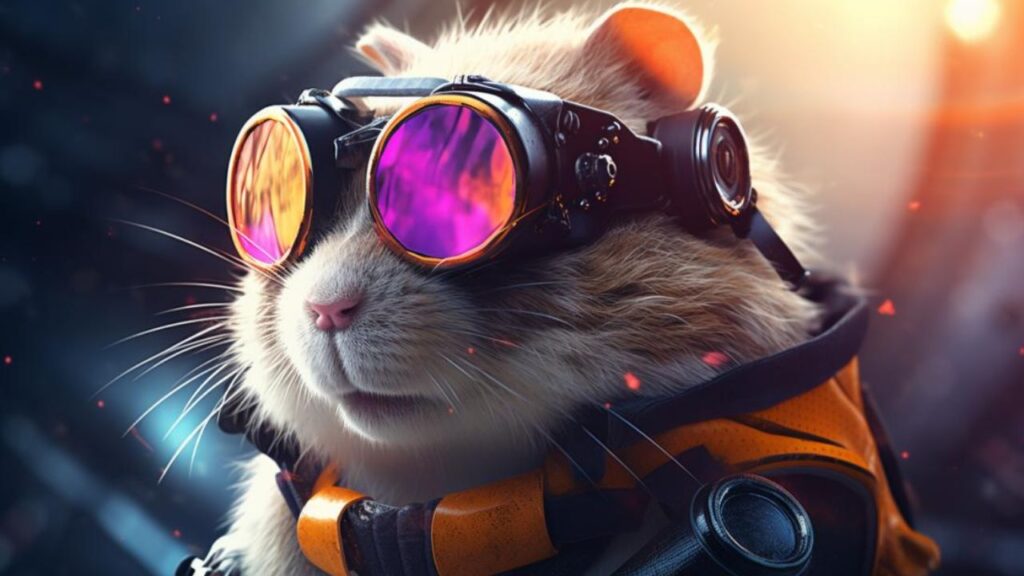
Hi there, hamster aficionados! Hannah Hammie here, ready to take a peek into the future of our furry companions. As we look forward, it’s vital to consider both the conservation of hamster species in the wild and the evolving standards of care for domesticated hamsters. Let’s delve into the initiatives for conservation, the advancements in hamster husbandry, and the importance of educating future hamster owners.
Conservation Efforts for Wild Species
While our focus often rests on domesticated hamsters, it’s crucial to remember their wild counterparts. Many hamster species in the wild face threats from habitat loss, climate change, and human activities. Conservation efforts are essential to ensure these species don’t just survive but thrive.
Organizations and researchers are working on various conservation strategies. These include habitat restoration projects, studies on wild population dynamics, and breeding programs for endangered species. For instance, the European Hamster, once common across Europe and Russia, is now considered critically endangered. Efforts to protect and restore its habitat are underway, highlighting the need for conservation awareness.
Advances in Hamster Husbandry
The field of hamster husbandry is continually evolving, with ongoing research into their health, behavior, and wellbeing. As we learn more, we can expect advances in nutrition, habitat design, and veterinary care. For instance, there’s a growing emphasis on creating more enriching and spacious habitats that allow hamsters to exhibit their natural behaviors, like burrowing and foraging.
Healthcare for hamsters is also advancing, with better diagnostic tools and treatment options for common ailments. We’re moving towards a future where the wellbeing of these pets is given as much importance as that of larger animals, ensuring they live the happiest, healthiest lives possible.
Educating Future Hamster Owners
Education plays a pivotal role in the future of hamster care. It’s not just about teaching the basics of feeding and housing but instilling a sense of responsibility and empathy towards these small creatures. Future hamster owners, particularly younger generations, can benefit from resources like interactive online platforms, educational programs in schools, and community events focused on small pet care.
By educating future owners, we ensure that the mistakes of the past are not repeated and that hamsters are provided with the love and care they deserve. This education also helps in spreading awareness about the species in the wild, fostering a sense of stewardship for the natural world.
As we look towards the future, it’s filled with hope and enthusiasm for the well-being of both domestic and wild hamsters. With continued efforts in conservation, advancements in husbandry, and comprehensive education, we can ensure that these charming creatures continue to be a joyful part of our lives for generations to come.
Wrapping Up Our Hamster History Adventure

And just like that, our journey through the enchanting world of hamster history comes to a close. It’s been an absolute delight to share the tales of these charming creatures, from their wild origins to their beloved status in our homes today. Before we part ways, let’s take a moment to sum up some quick, actionable tips that intertwine hamster history with their care – ensuring you’re not just a great pet owner but a knowledgeable hamster historian too!
- Embrace Their Roots: Remember that your hamster’s natural behaviors are deeply ingrained. Provide opportunities for burrowing and foraging to mimic their wild habitat.
- Stay Informed: Keep up with the latest in hamster care and husbandry. The more we learn about these creatures, the better we can care for them.
- Conserve and Preserve: While enjoying the company of your pet hamster, also consider supporting conservation efforts for their wild cousins.
- Spread the Knowledge: Share what you’ve learned about hamster history and care with other potential or current hamster owners. Education is key to improving the lives of these pets.
- Monitor Health Closely: Stay vigilant about your hamster’s health. Early detection of issues can make a big difference, considering their small size and fast-paced lives.
- Choose Ethically: If you’re planning to bring a hamster into your home, opt for ethical sources like reputable breeders or adoption centers.
- Celebrate Their Uniqueness: Each hamster breed has its own history and characteristics. Embrace these differences and choose a breed that aligns well with your lifestyle and care capacity.
As we end this hamster history expedition, let’s carry forward the love, respect, and fascination for these adorable creatures. Whether they’re spinning on their wheels or snuggled in a cozy corner, hamsters continue to be a source of joy and wonder in our lives. Here’s to many more years of understanding, loving, and caring for our furry little friends!
Until our next hamster adventure, keep those wheels spinning and the hamster love flowing!

